THE BAZOOKA
THE BAZOOKA
Immediately recognizable and with a name that everyone remembers after the first mention, the bazooka is one of the most iconic weapons of all time. Developed in the early 20th century, this recoilless anti-tank rocket launcher, nicknamed also "stovepipe", was first introduced widely during World War II.
Although it had its flaws, General Dwight D. Eisenhower, Supreme Allied Commander of the Allied Expeditionary Force mentioned the bazooka among the four "tools of victory" in WWII along with the atomic bomb, the C-47 Skytrain transport plane, and the Jeep. Today, bazooka has become a generic term for shoulder-fired rocket launchers in the public.
The development of the bazooka entailed two separate technologies: rocketry and shaped-charge warheads. Like many weapons of World War II, it was a high-powered weapon that was scaled down for increased mobility and ease of fire.
The concept behind the bazooka was to create a handheld weapon that could inflict significant armor-piercing damage. The problem facing the use of a conventional weapon of this power would be the overwhelming recoil effect. Artillery and mortar units, for example, send this recoil shock into the ground, but therefore need to be securely fastened to the earth.
The developers of the new weapon realized that a rocket sent down the barrel of a tube could overcome this effect.
The development of the concept behind it already began during World War I. The precursor of the bazooka was created at the end of 1918 by physicists Robert Goddard and Clarence Hickman. The latter even lost several fingers due to the explosion of one of the rockets.
They demonstrated it to the U.S. Army on November 6, 1918, at the Aberdeen Proving Ground, Maryland. The Army was enthusiastic about the new launcher but with the November 11 Armistice ending WWI, the development stopped. Goddard left the project and continued his research on rocket propulsion. Hickman joined the National Defense Research Committee during WWII and contributed to the development of the actual bazooka.
Other countries, like the Soviet Union, had developed anti-tank rifles but they had become obsolete as the armor of the tanks became thicker during WWII. In the late 1930s both German and Swiss scientists, notably Henry Mohaupt, worked with shaped-charge explosives that could penetrate heavy armored metal plates. In the United States, this technology was first applied to hand grenades, but these prototypes were too heavy to be thrown or shot like a rifle grenade or had a too strong recoil.
In 1942, Colonel Leslie Skinner at the Ordnance Corps received orders to develop a new anti-tank weapon that could knock out German tanks via using the new M10 shaped-charge grenade. He was the right man for the job since he was fascinated with rockets from his childhood. He had even set the roof of the Fort Strong hospital on fire with his homemade rocket in 1915.
He instructed his colleague Second Lieutenant Edward Uhl to design a launcher for the grenade. Uhl realized that the armor-piercing rocket that he created could be held on top of a soldier’s shoulder and fired from a tube, which would shield the firer from the exhaust of the rocket. He said in an interview: “I was walking by this scrap pile, and there was a tube that... happened to be the same size as the grenade that we were turning into a rocket. I said That's the answer! Put the tube on a soldier's shoulder with the rocket inside, and away it goes.”
Wearing a welder's helmet and gloves, they successfully tested the prototype by firing into the Potomac River. In May 1942, they participated in a trial of various spigot mortars at the Aberdeen Proving Ground. While the mortars missed the moving tank target, their rocket launcher scored a direct hit. Thus, the Army ordered 5000 launchers and 25,000 rockets from General Electric which delivered the first batch in just a month.
It was a cheap and simple design. One of the senior officers present at the trial was Major-General Gladeon M. Barnes, Chief of Research and Engineering in the Ordnance Department. He was satisfied with the new weapon and said: "It sure looks like Bob Burns' bazooka".
The name itself came from a tube-like instrument called a bazooka invented by comedian Robin “Bob” Burns in the 1910s. Burns made the bazooka instrument from stove pipes and a whiskey funnel. During World War I, he served in the U. S. Marine Corps in France where he became the head of USMC's jazz band in Europe.
The first pattern bazooka was called M1. It had several variants (M1A1, M9, M9A1, M20A1, M20A1B1) over the years of its service. The M1 had a forward pistol grip which was removed and further modifications and simplifications were made in later models. This included the replacement of the battery ignition of the rocket by a trigger magneto, the use of metal instead of wood for certain parts, and the improvement of the iron sight to an optical sight.
The initial maximum range was around 400 yards / 370m, the effective range 150 yards / 140m. Since the device was getting larger and thus more difficult to carry, the M9 model could be disassembled into two parts. This proved especially handy for paratroopers. Different blast deflectors were used also. The bazooka could be handled by a team of two: an operator and a loader. The latter carried the ammunition, loaded the rockets onto the tube, and gave a ready signal to the operator.
The first rocket used was the 2.36-inch / 60mm M6 rocket containing 1.6 pounds / 0.7 kg of explosives. It was loaded from the back of the weapon and was ignited with wires running out of the rocket that had to be connected to contact springs. It was quite unreliable; many malfunctions were reported and it had to be improved.
Too cold or hot temperatures, tropical climate, salt air, and humidity negatively affected the early rockets. Oftentimes, this was the result of improper storage of the ammunition. The shape of the warhead was also changed to a blunted version in order to avoid the rocket bouncing off from the armor of the target. Early versions of the rocket tended to get stuck and explode in the bazooka itself. The projectile could be used as a remote-controlled anti-tank mine if properly concealed.
The rocket also had a smoke version designated M10 and had a white phosphorus smoke head. In addition to creating a smokescreen, it could be used also to drive the defenders out of bunkers or to mark targets. One of the advantages of the bazooka was that it had almost no recoil. At the same time, it had a dangerous back-blast. The loader and everyone else around the weapon had to pay attention not to get in the way of the hot gases expelled by the launcher.
In 1942, the bazookas made their first appearance in battle in North Africa during Operation Torch, often fired by soldiers who had never been trained in their use, and thus reported little success. It was during these battles in Tunisia that the Germans first captured the American bazooka, and they eagerly passed on the technology to their own developers, who soon produced the highly effective 88mm Panzerschreck based on its design.
American Lend-Lease bazookas were also captured by the Germans from the Soviet forces on the Eastern Front. The larger caliber Panzerschreck had a much better armor-penetrating ability than the earlier versions of the bazooka.
Despite earlier problems, bazookas played an important role during the Allied invasion of Italy in 1943, where the Americans managed to repel fierce German armored counterattacks with the help of the rocket launchers.
In the later stages of the war, the German tanks’ armor thickness and design were improved considerably which made it even more difficult to knock them out. American soldiers were forced to aim for vulnerable areas such as rear engines, sprockets, and tracks. Shortly before D-Day, General Patton wrote in a letter that "the purpose of the bazooka is not to hunt tanks offensively, but to be used as a last resort in keeping tanks from overrunning infantry”.
In the Pacific, due to the much thinner armor of the Japanese tanks, the bazooka was much more successful, though it was not used as often as on the battlefields of Europe. The humidity, the hot salt air caused much more trouble and resulted in many malfunctions.
Bazookas were not applied only by the infantry. Some of the American jeeps used in an anti-tank role were equipped with a twin-bazooka launcher. There were even more revolutionary solutions: during the Battle of Normandy, inspired by other pilots’ practice, bazookas were mounted on an L-4 Grasshopper observation plane of Major Charles "Bazooka Charlie" Carpenter, who reportedly destroyed six German tanks and other vehicles with his aircraft named Rosie the Rocketer.
Over WWII, these rocket launchers were supplied to, for example, the United Kingdom, Canada, China, the Free French forces, the Soviet Union, and Tito’s partisans in the Balkans, etc. All in all, the bazooka was deemed a useful and effective weapon that could be produced in great numbers due to its cheapness and relative simplicity. During the war, fifteen American soldiers and one marine received Medals of Honor for their courage in defeating the enemy with a bazooka.
The U.S. Army reportedly manufactured almost 500,000 bazookas, 12,996,000 rockets, and 2,607,000 smoke rockets during World War II. In addition to the American weapon, the British had their own anti-tank device, the PIAT (Projector, Infantry, Anti-Tank) spigot mortar which was operated by a large spring.
The efficiency of the German Panzerschreck made the American engineers of the Ordnance Corps rethink the bazooka’s design which resulted in the 3.5-inch / 90mm M20 "Super Bazooka" which had much better characteristics than the German weapon it was based upon. However, the new model was not developed until the end of the war and was used only later in the Korean War. Due to budget cuts after WWII, U.S. forces started the war with earlier WWII leftover bazooka models instead of the new M20.
The older weapons were too weak against the tanks supplied by the Russians and on top of that many of the rockets did not explode upon impact due to improper storage after WWII. The situation was solved by a quick airlift of M20 launchers. Before getting replaced by more modern weapon systems like the M67 recoilless rifle and the M72 LAW rocket, it was also used in the Vietnam War by the U.S. armed forces. The Super Bazooka was in service in a wide range of countries from all continents of the world.
It is noteworthy that the creator of the actual bazooka launcher, Edward Uhl left the Army after the war and worked in the defense industry. Decades later, he became the chairman of Fairchild Industries, and among other programs, he was responsible for developing the iconic A-10 Thunderbolt II close air support “tank killer” aircraft. He had a good relationship with German rocket scientist Wernher von Braun, one of the main figures behind WWII German rocket technology and later the U.S. space program. They even went on hunting trips together to Africa.
In 1947, a similarly named American bubble gum was released by the Topps Company from Brooklyn.
The gum came with short comic strips about the adventures of “Bazooka Joe”, created by cartoonist Wesley Morse.
Different patterns of the bazooka can be seen in several video games and movies such as Saving Private Ryan or the Band of Brothers miniseries. In one of Saving Private Ryan's scenes Technical Sergeant Horvath, played by actor Tom Sizemore, tries to destroy an incoming Tiger tank but the rocket bounces off from the thick frontal armor of the panzer.
-- Beaches of Normandy Tours.

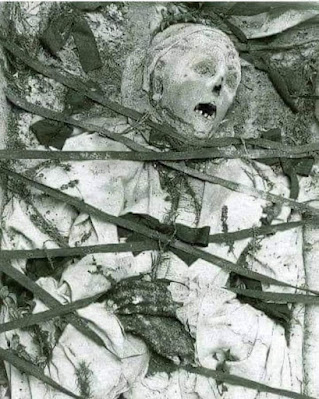
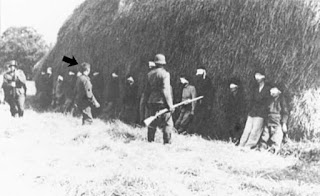
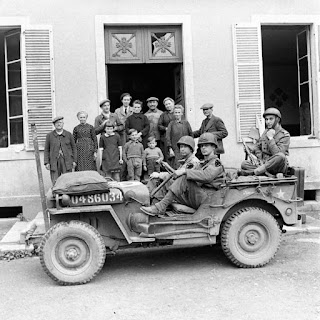




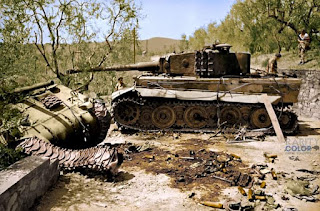
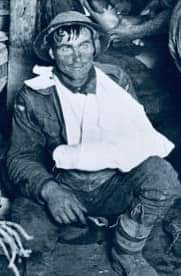
Comments
Post a Comment